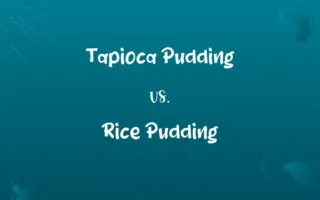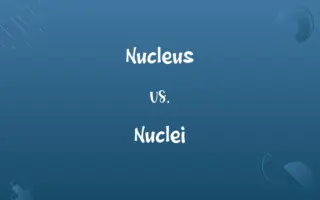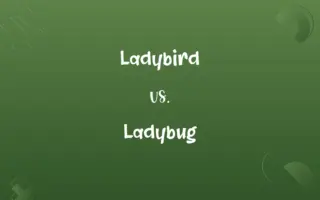Nostoc vs. Anabaena: Know the Difference

By Shumaila Saeed || Published on February 16, 2024
Nostoc and Anabaena are both genera of cyanobacteria, but Nostoc forms colonies in gelatinous sheaths while Anabaena does not typically form sheaths and is known for nitrogen-fixing capabilities.

Key Differences
Nostoc is a genus of cyanobacteria known for its distinctive colonies encased in gelatinous sheaths, often found in freshwater and wet environments. Anabaena, also a genus of cyanobacteria, typically lacks these sheaths and is commonly found in freshwater and symbiotic relationships with plants.
Shumaila Saeed
Feb 16, 2024
Nostoc can form symbiotic relationships with plants, fungi, and lichens, contributing to nitrogen fixation in these associations. Anabaena is especially noted for its nitrogen-fixing capabilities, with some species forming specialized cells called heterocysts for this purpose.
Shumaila Saeed
Feb 16, 2024
The appearance of Nostoc is often described as bead-like chains of cells within a gelatinous matrix, which can swell to form visible colonies. Anabaena, conversely, appears as chains of cells without a surrounding sheath, sometimes forming spiral or straight filaments.
Shumaila Saeed
Feb 16, 2024
In terms of reproduction, Nostoc reproduces through fragmentation, akin to asexual reproduction, where part of the colony breaks off to form a new colony. Anabaena, while also reproducing asexually, has a more complex life cycle involving the formation of akinetes under stressful conditions.
Shumaila Saeed
Feb 16, 2024
Nostoc plays a significant role in soil fertility due to its nitrogen-fixation ability and presence in various ecosystems. Anabaena, besides its role in nitrogen fixation, is studied for its potential in biotechnology and biofuel production due to its unique metabolic capabilities.
Shumaila Saeed
Feb 16, 2024
ADVERTISEMENT
Comparison Chart
Physical Appearance
Forms colonies in gelatinous sheaths
Lacks gelatinous sheaths
Shumaila Saeed
Feb 16, 2024
Habitat
Freshwater, wet environments, symbiotic relationships
Freshwater, symbiotic relationships
Shumaila Saeed
Feb 16, 2024
Nitrogen Fixation
Nitrogen-fixing, symbiotic with plants, fungi, lichens
Notably nitrogen-fixing, has heterocysts
Shumaila Saeed
Feb 16, 2024
Cellular Structure
Bead-like chains within a matrix
Chains of cells, sometimes spiral
Shumaila Saeed
Feb 16, 2024
ADVERTISEMENT
Nostoc and Anabaena Definitions
Nostoc
Reproduces through fragmentation, contributing to its spread in suitable habitats.
A piece of Nostoc colony broke off to form a new colony nearby.
Shumaila Saeed
Jan 16, 2024
Anabaena
Commonly found in freshwater environments and in symbiotic relationships.
Anabaena was found in a symbiotic relationship with aquatic plants.
Shumaila Saeed
Jan 16, 2024
Nostoc
Known for nitrogen fixation and symbiotic relationships in various ecosystems.
Nostoc contributes to the nitrogen content in the soil.
Shumaila Saeed
Jan 16, 2024
Anabaena
Studied for its potential in biotechnology and biofuel production.
Researchers are exploring Anabaena for its application in producing biofuels.
Shumaila Saeed
Jan 16, 2024
Nostoc
Plays a role in soil fertility and is found in diverse environments.
Nostoc was observed in the moist soil of the forest, enhancing its fertility.
Shumaila Saeed
Jan 16, 2024
ADVERTISEMENT
Anabaena
A genus of cyanobacteria, often forming filamentous chains without a sheath.
The Anabaena formed a thin, filamentous layer on the surface of the water.
Shumaila Saeed
Jan 16, 2024
Nostoc
A genus of cyanobacteria forming colonies in gelatinous sheaths.
The Nostoc colony glistened in the sunlight on the wet rock.
Shumaila Saeed
Jan 16, 2024
Anabaena
Noted for specialized cells called heterocysts for nitrogen fixation.
Anabaena's ability to fix nitrogen is attributed to its unique heterocysts.
Shumaila Saeed
Jan 16, 2024
Nostoc
Appears as bead-like chains of cells, often forming visible colonies.
The Nostoc appeared like tiny green beads strung together in the pond.
Shumaila Saeed
Jan 16, 2024
Anabaena
Reproduces asexually and forms akinetes under stressful conditions.
In response to stress, the Anabaena began forming akinetes.
Shumaila Saeed
Jan 16, 2024
Nostoc
Any of various freshwater nitrogen-fixing cyanobacteria of the genus Nostoc that form spherical colonies of filaments embedded in a gelatinous substance.
Shumaila Saeed
Jan 15, 2024
Anabaena
Any of various freshwater cyanobacteria of the genus Anabaena that sometimes occur in drinking water and cause a bad taste and odor.
Shumaila Saeed
Jan 15, 2024
Nostoc
Any member of the genus Nostoc of cyanobacteria, found in a variety of environmental niches, that form colonies composed of filaments of moniliform cells in a gelatinous sheath.
Shumaila Saeed
Jan 15, 2024
Nostoc
A genus of algæ. The plants are composed of moniliform cells imbedded in a gelatinous substance.
Shumaila Saeed
Jan 15, 2024
Repeatedly Asked Queries
What is Anabaena?
A genus of cyanobacteria known for filamentous chains and nitrogen fixation.
Shumaila Saeed
Feb 16, 2024
What is Nostoc?
A genus of cyanobacteria forming colonies in gelatinous sheaths.
Shumaila Saeed
Feb 16, 2024
How does Nostoc appear visually?
It appears as bead-like chains in a gelatinous matrix.
Shumaila Saeed
Feb 16, 2024
Where is Nostoc typically found?
In freshwater, wet environments, and in symbiotic associations.
Shumaila Saeed
Feb 16, 2024
What is Anabaena's importance in biotechnology?
Its potential in biofuel production and nitrogen fixation.
Shumaila Saeed
Feb 16, 2024
What are Anabaena's distinctive cells called?
Anabaena has specialized nitrogen-fixing cells called heterocysts.
Shumaila Saeed
Feb 16, 2024
How does Nostoc reproduce?
Through fragmentation, a form of asexual reproduction.
Shumaila Saeed
Feb 16, 2024
How does Anabaena reproduce?
Asexually and by forming akinetes under stress.
Shumaila Saeed
Feb 16, 2024
Can Anabaena be found in symbiotic relationships?
Yes, particularly with aquatic plants.
Shumaila Saeed
Feb 16, 2024
What environments do Anabaena prefer?
Freshwater environments are most common.
Shumaila Saeed
Feb 16, 2024
Can Nostoc be used in water treatment?
It has potential in bioremediation and water purification.
Shumaila Saeed
Feb 16, 2024
What is Nostoc's role in the ecosystem?
It contributes to nitrogen fixation and soil fertility.
Shumaila Saeed
Feb 16, 2024
Is Nostoc visible to the naked eye?
Yes, especially when colonies swell in size.
Shumaila Saeed
Feb 16, 2024
Is Nostoc beneficial to agriculture?
Yes, due to its nitrogen-fixing abilities.
Shumaila Saeed
Feb 16, 2024
Are there any health concerns with Anabaena?
Some species can produce toxins harmful to wildlife and humans.
Shumaila Saeed
Feb 16, 2024
Are Anabaena and Nostoc easy to distinguish?
Yes, primarily by their physical structure and colony formation.
Shumaila Saeed
Feb 16, 2024
What makes Anabaena interesting to scientists?
Its nitrogen-fixing abilities and potential in renewable energy.
Shumaila Saeed
Feb 16, 2024
Do Anabaena colonies have a unique appearance?
They form filamentous, sometimes spiral chains.
Shumaila Saeed
Feb 16, 2024
Can Nostoc be found in symbiosis with plants?
Yes, it forms symbiotic relationships with various plants and lichens.
Shumaila Saeed
Feb 16, 2024
What research is being done on Nostoc?
Studies on its role in ecology, agriculture, and soil health.
Shumaila Saeed
Feb 16, 2024
Share this page
Link for your blog / website
HTML
Link to share via messenger
About Author
Written by
Shumaila SaeedShumaila Saeed, an expert content creator with 6 years of experience, specializes in distilling complex topics into easily digestible comparisons, shining a light on the nuances that both inform and educate readers with clarity and accuracy.






































































